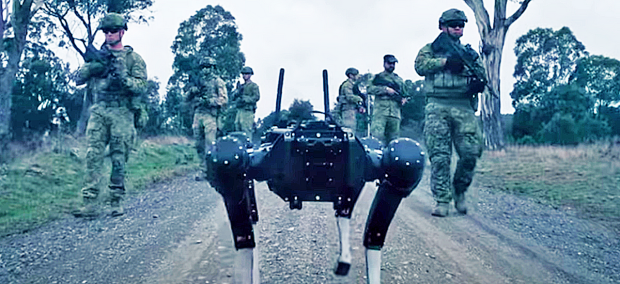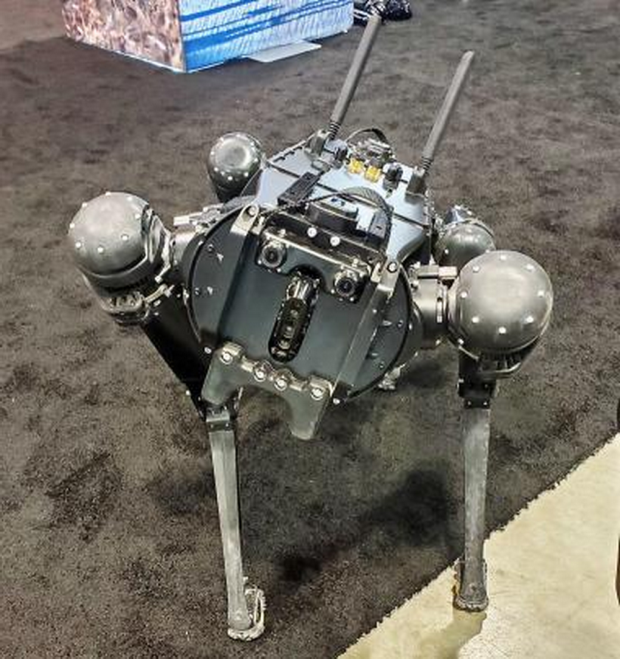Soldiers Can Now Steer Robot Dogs with Brain Signals


Defenseone.com reported that a breakthrough that enables a human to guide a robot merely by thinking could help troops on a future battlefield to communicate with a wide array of sensors, vehicles, and robots—all while the enemy is looking to intercept radio communications. The photo shows a Ghost Robotics ground robot accompanying a group of Australian Army soldiers on a demonstration of robot piloting via brain signals. A small sensor tucked neatly behind the ear allows soldiers to mentally guide robotic quadrupeds.
A paper recently published in Applied Nano Materials by Australian researchers working with the country’s Defense Department documents how a test subject directed a ground robot to waypoints simply by visualizing them through a Microsoft HoloLens. “Until now [the brain-computer interface or BCI] systems have only functioned effectively in laboratory settings, requiring [the user] to wear invasive or cumbersome wet sensors and remaining stationary to minimize signal noise. In comparison, our dry sensors are easy to wear in combination with the BCI. They work in real-world environments and users can move around while using the system,” Chin-Teng Lin, a professor at the University of Technology Sydney and one of the paper’s authors, explained to Defense One in an email. Read the Defenseone.com update for details. The second photo shows the Ghost Robotics Vision 60 at a 2022 tradeshow.
Our thanks to CDR David Place (USN/Ret), davidplace47[at]gmail[dot]com, and Robin E. Alexander, President ATC, alexander technical[at]gmail[dot]com, for their assistance with this report, the background for which appeared in their # 23 - 4 -31 MARCH 2023 edition of the UNMANNED SYSTEMS NEWS (USN).
David distributes the USN, a free, comprehensive newsletter in PDF format every week or two, as well as serial news flashes, from which this NREF news update was sourced. To be included in his distribution, simply send a subscribe request to davidplace47[at]gmail[dot]com.
